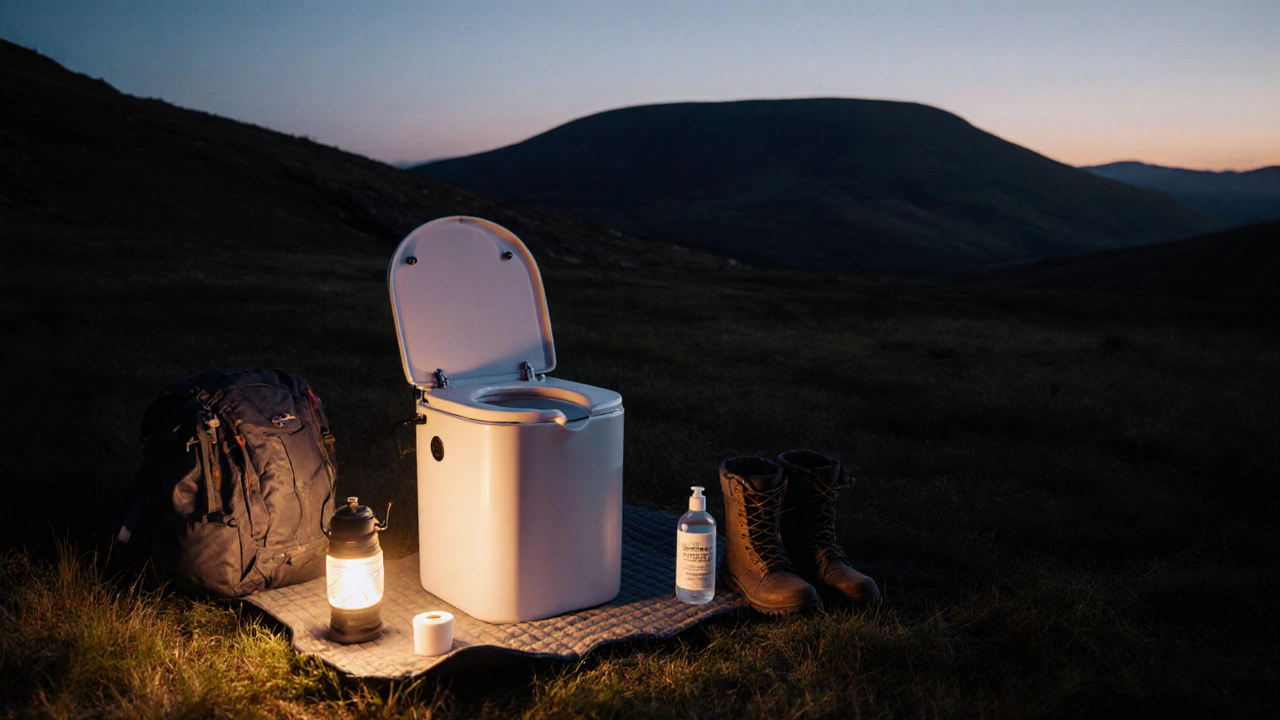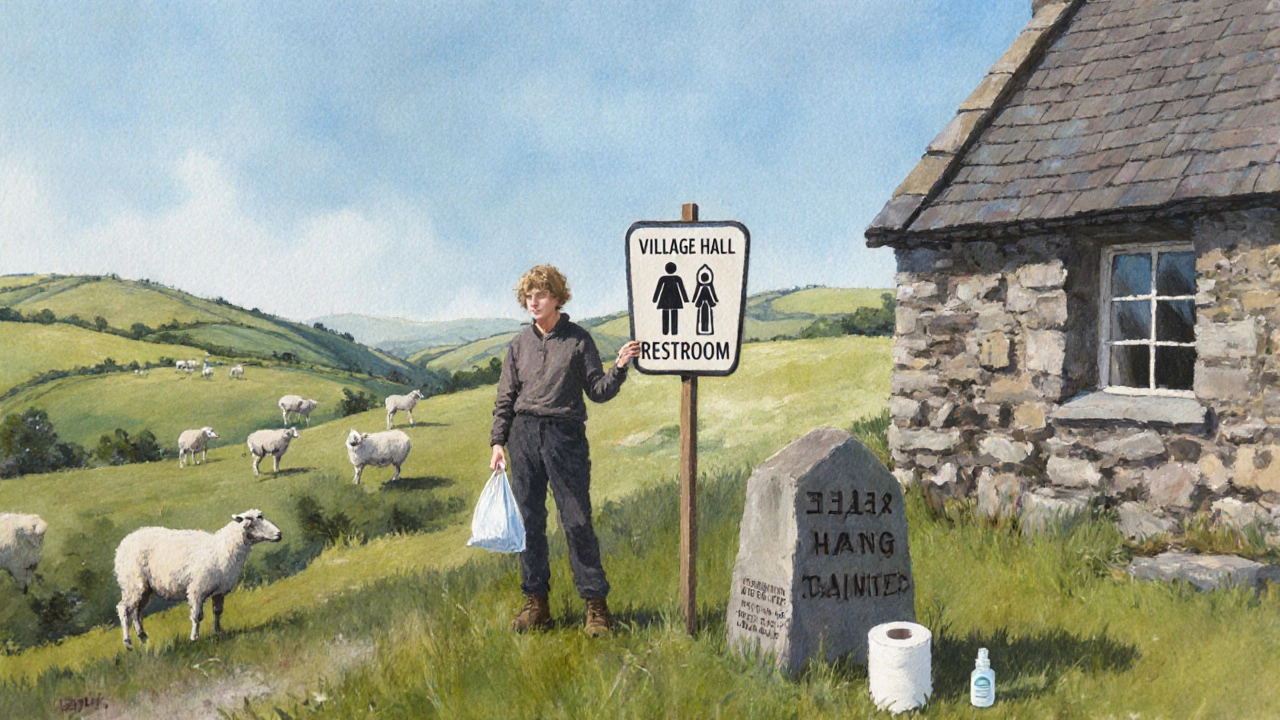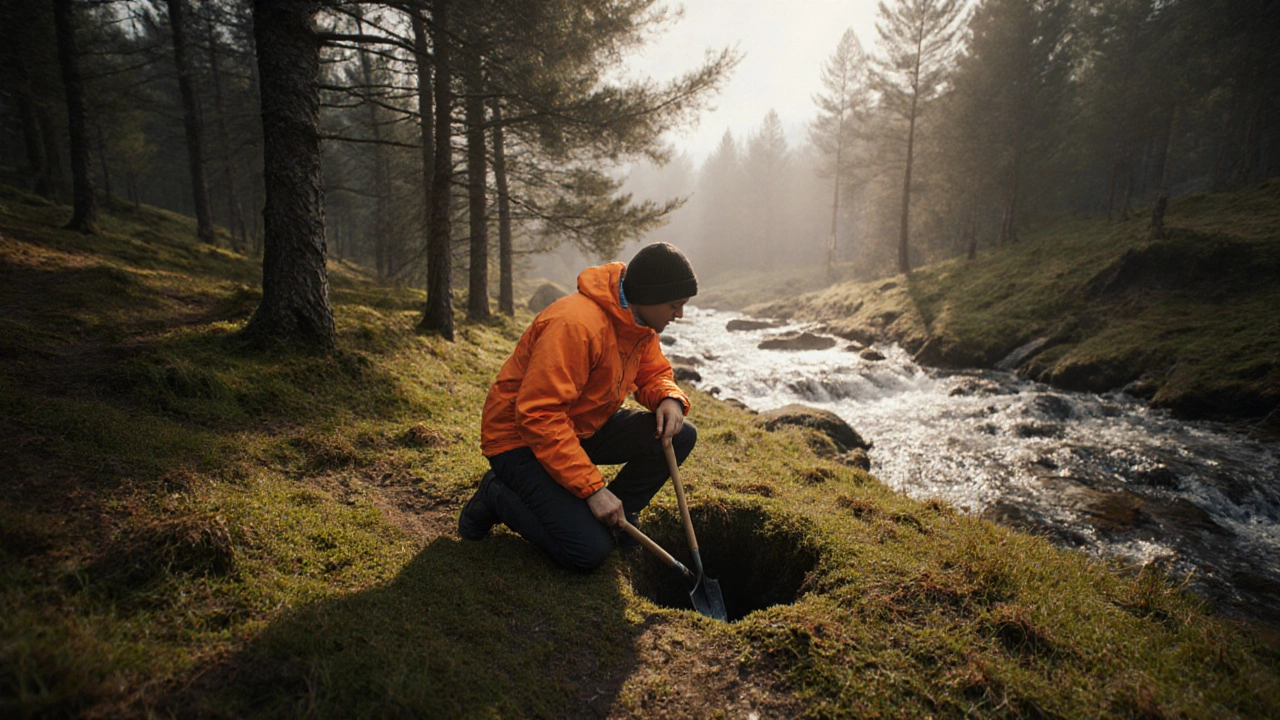Wild Camping Toilet Decision Tool
Select your camping situation to see the recommended toilet solution based on the UK Countryside Code and Leave No Trace principles.
Recommended Solution
Select your camping parameters and click "Find My Recommended Solution" to see the best option for your trip.
When you're out in the UK hills with no facilities, figuring out how to handle a wild camping toilet can feel daunting.
Key Takeaways
- Follow the Countryside Code to stay legal and protect the environment.
- Choose the right method: cat hole, portable chemical toilet, public facility, or pack‑out bag.
- Bring biodegradable toilet paper and hand‑sanitiser for hygiene.
- Practice the "Leave No Trace" principles to keep wild sites pristine.
Why Toileting Matters in Wild Camping
Leaving waste on the ground not only looks bad - it can spread disease, contaminate water sources, and upset other campers. In the UK, the Countryside Code explicitly advises disposing of human waste responsibly. Ignoring this can lead to fines and damage the natural areas you love.
Legal and Environmental Rules
The Countryside Code says you should:
- Use a toilet when one is available.
- If none exists, dig a small cat hole at least 6‑8 inches deep, 70 metres away from water, trails, and campsites.
- Cover the hole completely after use.
Many UK national parks, like the Lake District and Snowdonia, have stricter local bylaws that ban cat holes near popular routes. Always check the specific park’s website before you set out.

Choosing the Right wild camping toilet Solution
There are four main ways to deal with waste while wild camping. Pick the one that fits your trip length, gear load, and the land you’ll be on.
1. The Classic Cat Hole
The cat hole is the cheapest, zero‑weight option. It works best for short walks where you can dig and cover quickly.
- When to use: Day hikes, low‑impact routes, areas without strict bylaws.
- How to dig: Use a small trowel or sturdy pocketknife. Select soil that isn’t frozen or overly rocky.
- Depth & distance: 6‑8 in (15‑20 cm) deep, at least 70 m from water, paths, and campsites.
2. Portable Chemical Toilets
A portable chemical toilet (often called a "camping toilet") offers comfort and privacy for longer trips.
- Weight: 2‑4 kg depending on size.
- Cost: £30‑£80 for a basic model; chemicals cost £5‑£10 per refill.
- Setup: Open the tank, use the seat, seal with the built‑in waste bags, then close for transport.
When you return to civilisation, empty the tank at a designated dump station - many UK campgrounds provide these.
3. Pack‑Out Solutions (WAG Bags)
For areas where digging is prohibited, a WAG bag (Waste Alleviation and Guts bag) is the safest choice.
- Design: Thick, leak‑proof bag with a deodorising gel.
- Usage: Open the bag, do your business, seal, and store until you can dispose of it at a waste centre.
- Cost: £2‑£4 per bag; a small pack of ten costs under £20.
4. Using Public Facilities
Many UK walking routes pass by public toilets at village halls, churches, or rest stops. If you’re on a multi‑day trek, plan your nightly stops near these amenities.
- Pros: No waste to manage, clean water for hand‑washing.
- Cons: May involve detours; facilities can be closed in off‑season.
Step‑by‑Step Guide to Digging a Cat Hole
- Find a spot at least 70 m from any water source, trail, or campsite.
- Clear surface debris - leaf litter, rocks, and twigs.
- Using a small trowel, dig a hole 6‑8 in (15‑20 cm) deep and about 4 in (10 cm) wide.
- Do your business directly into the hole. Use biodegradable toilet paper sparingly; pack out any excess if the ground is rocky.
- Cover the hole with the original soil, tamp it down, and disguise it with natural material.
Hygiene Tips for the Backcountry
- Carry a bottle of hand sanitiser (70% alcohol) for cleaning after each use.
- Avoid using regular toilet paper on delicate mosses - it can take months to decompose.
- If you’re near a water source, wash your hands with bottled water and soap, then disperse the wash water at least 70 m downstream.
- Consider a small field shower bag for rinsing gear without contaminating streams.

Comparison of Toilet Options for Wild Camping
| Option | Portability | Cost (approx.) | Setup & Use | Disposal |
|---|---|---|---|---|
| Cat Hole | Zero weight, just a trowel | £0‑£5 (trowel) | Dig & cover | Buried on‑site (follow Code) |
| Portable Chemical Toilet | 2‑4 kg | £30‑£80 + chemicals | Open tank, use seat | Empty at dump station |
| WAG Bag | Lightweight, single‑use | £2‑£4 per bag | Seal after use | Pack‑out to waste centre |
| Public Facility | None | Free (if open) | Walk to facility | Provided by staff |
Quick Checklist Before You Head Out
- Read the local bylaws for the area you’ll camp in.
- Carry a small trowel, biodegradable toilet paper, hand sanitiser, and a WAG bag.
- If using a portable chemical toilet, check you have enough chemicals for the trip length.
- Plan nightly stops near public toilets when possible.
- Leave a note in your campsite log (if using a managed campsite) about waste handling.
Mini FAQ
Can I dig a cat hole near a river?
No. The Countryside Code requires you to stay at least 70 m away from any water source to avoid contamination.
What if the ground is frozen?
When the soil is frozen, dig a shallow pit in softer ground, use a WAG bag, or seek a public facility. Freezing makes a proper cat hole impossible.
Do portable chemical toilets need special waste bags?
Most models have built‑in sealed bags. Just make sure the chemicals are compatible and replace the bag when full.
Is it okay to use regular toilet paper?
Regular paper takes a long time to break down and can harm delicate ecosystems. Stick to biodegradable, fast‑decomposing brands, and pack out any excess.
What are the penalties for breaking the Countryside Code?
Fines can range from £50 to £500, depending on the park’s regulations. Repeated offences may lead to a ban from the area.
